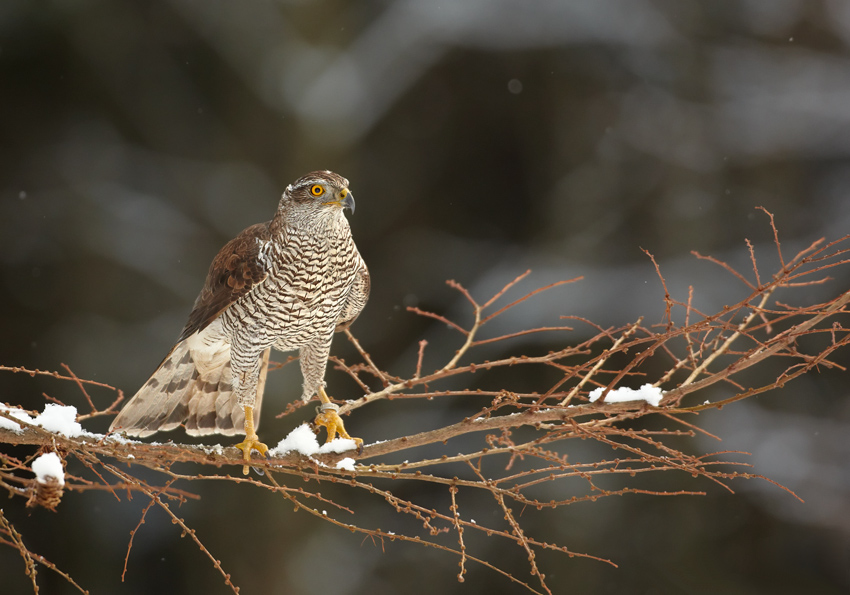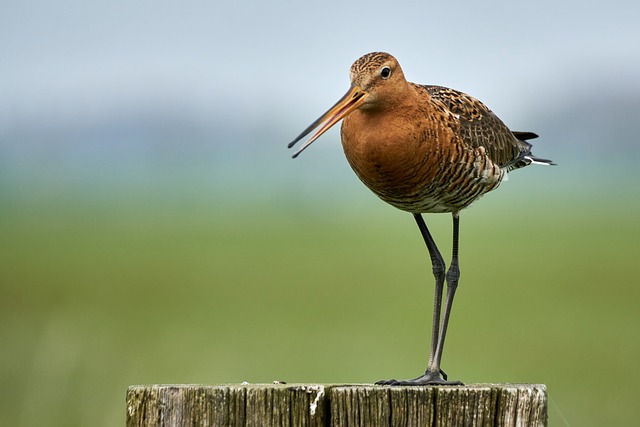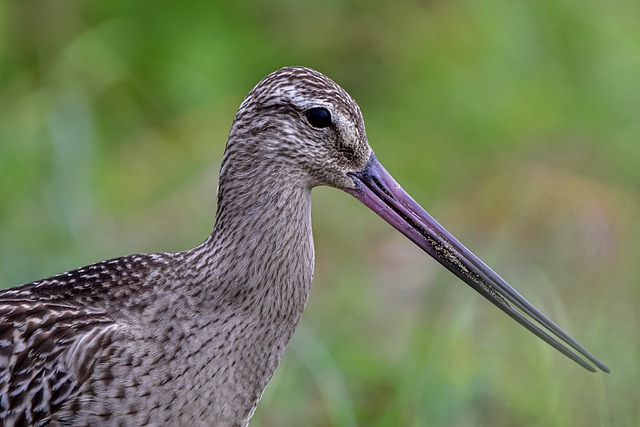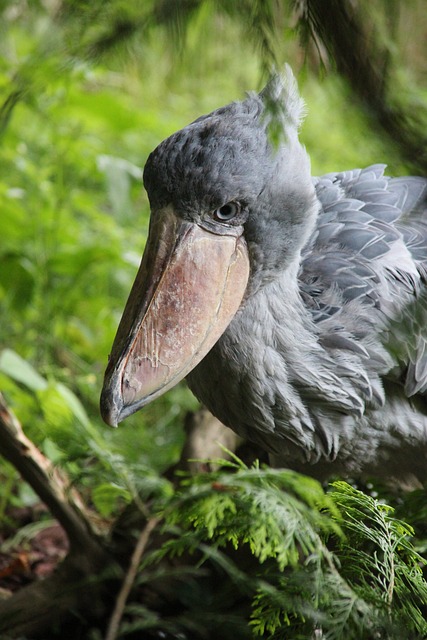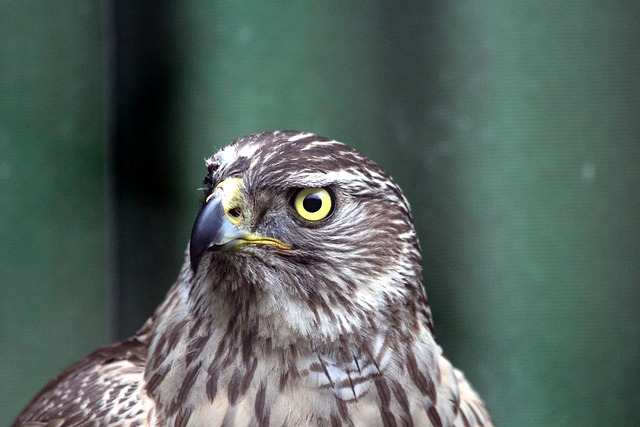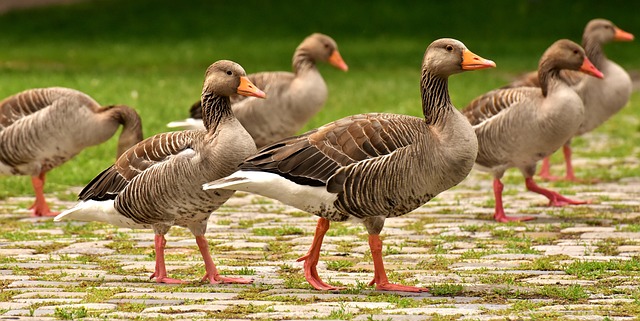The blue tit is a stunningly beautiful small bird that has captivated the hearts of many. With its bright blue plumage and distinct yellow breast, the blue tit is a sight that many birdwatchers look forward to seeing.
But what makes this small bird so special, and how can we help to conserve it?
Through this comprehensive guide, readers will develop a better understanding of the blue tit and what makes it so distinct from other species.
Introduction
The blue tit is a stunningly beautiful small bird that has captivated the hearts of many. With its bright blue plumage and distinct yellow breast, the blue tit is a sight that many birdwatchers look forward to seeing. But what makes this small bird so special, and how can we help to conserve it? Through this comprehensive guide, readers will develop a better understanding of the blue tit and what makes it so distinct from other species.
The blue tit (Cyanistes caeruleus) is a small passerine bird that belongs to the tit family Paridae. It is found across Europe, the Middle East, and parts of North Africa. This species is well-known for its ability to adapt to different environments and habitats, and for its playful and inquisitive nature.
The blue tit is an omnivorous species, meaning it has a varied diet that includes both insects and seeds. It is also a successful breeder of its species, typically nesting in tree cavities or in hollows.
The blue tit is a protected species in many countries across the world due to its declining population. There are several threats to this species, including the destruction of its natural habitat, the use of pesticides, and climate change. In order to protect the blue tit, it is important to understand the challenges it faces and to take steps to ensure its survival.
By the end of this article, readers will have a better understanding of the blue tit, including its characteristics, its diet, and its breeding habits. They will also learn about its conservation status and some interesting fun facts. This comprehensive guide will provide readers with all the information they need to know about the blue tit and how to help conserve this precious species.
Description
The blue tit is a small and vibrant bird native to the United Kingdom and parts of Europe. It is a member of the Paridae (tit) family and is also known as the European blue tit or Cyanistes caeruleus. These birds measure up to 5.3 inches (13.5 cm) in length with a wingspan of up to 5.9 inches (15 cm). Blue tits have bright blue and yellow plumage, a white belly, and a bluish-black cap.
When it comes to behavior, blue tits are very active and agile. They are active all year round and are capable of flitting from branch to branch in search of food. They are also very social birds and are often seen in flocks. They even perform a specialized greeting called ‘tit-tit' where they repeatedly flick their wings and chirp to one another.
The blue tit is typically found in deciduous and coniferous forests, woodlands, and gardens. They nest in tree cavities or nest boxes, and can be seen in gardens or bird feeders. They will also frequent farmland and parkland regions in search of food.
In terms of diet, the blue tit is both an insectivore and granivore. They feed mainly on insects such as caterpillars, spiders, and aphids. They will also eat seeds, nuts, and fruits. They have a special technique to forage for food where they will hang upside down from tree branches in search of insects.
When it comes to breeding, the blue tit is a monogamous species. The breeding season starts in spring, typically March, and lasts until July. During the breeding season, the male blue tit will sing a special call to attract a female mate. Blue tits are cavity nesters, meaning they build their nests in tree cavities or nest boxes. The female will lay 4 to 9 eggs and the pair will take turns to incubate them.
The blue tit is currently listed as least concern on the IUCN Red List of Threatened Species. However, there are still some threats to the survival of the species. Loss of habitat, climate change, and disease are some of the main challenges to the conservation of the species. Conservation efforts and initiatives are being taken to protect the blue tit and its habitat.
In terms of fun facts, the blue tit is one of the most adaptable birds in the UK. They are able to survive in a variety of different habitats and can adapt to a changing environment. The blue tit is also a migratory species, though they will only migrate short distances.
In conclusion, the blue tit is a small but vibrant bird native to the UK and parts of Europe. They have bright blue and yellow plumage, and are active and agile. The blue tit feeds mainly on insects and can be seen in gardens or bird feeders. The breeding season starts in spring and lasts until July, and they build their nests in tree cavities or nest boxes. The blue tit is currently listed as least concern on the IUCN Red List of Threatened Species. Finally, the blue tit is one of the most adaptable birds in the UK and is also a migratory species.
Readers can help support the blue tit by providing food and nesting resources in their gardens and bird feeders. Planting native trees and shrubs can also provide food and nesting sites, and reducing the use of pesticides can help ensure that the blue tit has a healthy food supply. Finally, being aware of the threats the species faces and supporting conservation efforts can help protect the blue tit for generations to come.
Diet
The blue tit has a diverse diet that consists mostly of insects, such as caterpillars, aphids, spiders, and beetles. They also feed on small fruits, seeds, and even fungi. It is not uncommon for them to feed on nectar or sap from trees.
Blue tits have a unique foraging technique that helps them find food more efficiently and they are known to explore a variety of habitats in search of sustenance. They can be seen moving through the canopy of trees, occasionally swooping down to the ground or hovering in the air. They also seek out food in cavities, such as bird boxes or tree hollows.
One of the easiest ways to attract blue tits to a garden or bird feeder is to provide them with their favorite food items. Mealworms, sunflower seeds, and nuts are all excellent options. They also enjoy fruit, particularly apples and raisins. Offering a variety of foods in an open-style bird feeder will give the blue tit plenty of options.
In addition to visiting bird feeders, blue tits can also benefit from bird baths. Providing them with a shallow pool of water can help them rehydrate and also give them a source of entertainment and relaxation. Bird baths should be situated in a quiet, sheltered area and should be cleaned and refilled regularly.
Blue tits are also drawn to nest boxes. This is because they are cavity nesters and need a safe place to raise their young. Choosing the right nest box is essential, as blue tits require a box with a hole that is approximately 25-30mm in size.
By providing them with the right food, water, and nesting spots, readers can help support the conservation of the blue tit. In addition to offering food and water, it is also important to maintain a pleasant environment for the birds by reducing noise and light pollution in the area. This will help the blue tit thrive and can also be a great source of enjoyment for birdwatchers.
Breeding Habits
The blue tit has a particular breeding season, which begins in April and lasts until August. During this period, male blue tits can be seen flying around and displaying their bright plumage to attract a mate. They will also sing their characteristic song, which consists of a loud series of “ti-ti-ti” notes.
When a pair of blue tits decides to settle down, they will build a nest in a hole in a tree or a bird box. The female blue tit will line the nest with feathers, fur, wool, and lichens. Once the nest is completed, the female will lay between 8-12 eggs, which she will incubate for around two weeks. During this period, the male will feed the female while she’s nesting.
Once the eggs have hatched, the male will continue to provide food for the chicks until they are old enough to leave the nest. At this point, the male and female blue tit will continue to feed the chicks for another two weeks or so until they are independent and able to look for food on their own.

The blue tit is an incredibly vocal species, and they have a range of breeding calls that they use to communicate with one another. These include a “tizzee-tizzee” call, which is used when they are looking for a mate, as well as a “twee-twee-twee” call which is used to ward off predators or other intruders.
The blue tit is also known for its elaborate courtship displays. During the breeding season, the male will puff up its feathers, flap its wings, and make a series of low trills to attract a mate. The female will then respond with a series of high-pitched calls. If the female is interested in the male, she will bow her head and flutter her wings.
Once the pair has bonded, they will remain together for the duration of their breeding season. They may even remain together for multiple breeding seasons, depending on the availability of food and resources.
Conservation Status
The conservation status of the blue tit is of great concern. It is classified as a species of ‘Least Concern’ on the IUCN Red List, indicating that it is not currently endangered. However, it is still vulnerable to certain threats, some of which have been exacerbated by human activities.
One of the main factors contributing to the decline of the blue tit population is the loss of natural habitats. Due to deforestation and agricultural expansion, the blue tit is losing its native woodlands and wetland areas, leaving it with fewer places to feed, nest, and breed. This has also reduced the availability of food sources, particularly insect larvae, seeds, and berries, which blue tits rely on for their survival.
Another major threat to the blue tit is the presence of non-native predators. Invasive species, such as rats, cats, and some birds, can often compete with the blue tit for resources, reducing their access to food and nesting sites. Furthermore, these predators can attack or kill the blue tit’s eggs and young, leading to a further decline in the species’ population.
The use of pesticides and herbicides is also having a detrimental effect on the blue tit’s health. These chemicals can contaminate the soil, water, and air, reducing the availability of food sources. In addition, these chemicals can harm the blue tit’s health, leading to reproductive problems, weakened immune systems, and increased susceptibility to diseases.
Fun Facts
The blue tit is a fascinating species that continues to amaze us with its remarkable adaptations and behaviors. Here are some interesting facts about the blue tit:
Adaptability: The blue tit is a highly adaptable species. It is able to cope with changes in its environment, allowing it to survive in a wide variety of habitats. This adaptability has made it one of the most widespread species in Europe.
Migration Patterns: The blue tit migrates long distances in the winter, sometimes traveling up to 3,000 km. They typically travel in flocks of between 10 and 20 birds, and use the same migration routes every year.
Coloration: The blue tit's distinctive coloration is the result of a unique combination of pigments in its feathers. The bright blue of its wings is created by a blue-green pigment called porphyrin, while the yellow of its stomach is the result of carotenoids.
Behavior: The blue tit is a highly social species, often forming large flocks in the winter months. The male will also perform an elaborate courtship ritual to attract the female.
Singing Ability: The blue tit has a very distinctive song, which it sings throughout the day. It is believed to be one of the most vocal songbirds, and its song is thought to be used to attract mates and warn off rivals.
Feeding Habits: The blue tit is an incredibly efficient forager, and can often be seen busily hopping around trees and shrubs in search of food. It has an impressive ability to detect and locate food, and is capable of raiding even the tightest of spaces.
Nesting Habits: The blue tit is a hole-nesting species, typically nesting in tree cavities or bird boxes. The female will build a nest out of moss, grass, feathers and other materials, and will lay up to 12 eggs at a time.
Males: The blue tit male is easily identifiable by its bright blue head and wings. It is larger than the female, and has a longer tail and wingspan.
Females: The female blue tit is smaller than the male, and has a duller plumage. It can be identified by its olive-green wings, brown head and yellow belly.
The blue tit is an astonishing bird, and one that will continue to fascinate us for years to come. With its impressive adaptability and remarkable behaviors, we are sure to learn more about this species in the future.
Video

